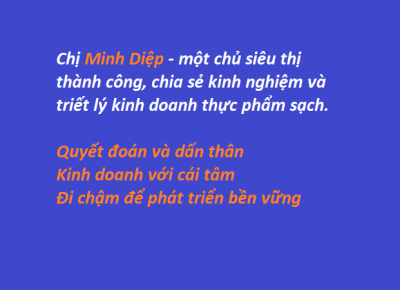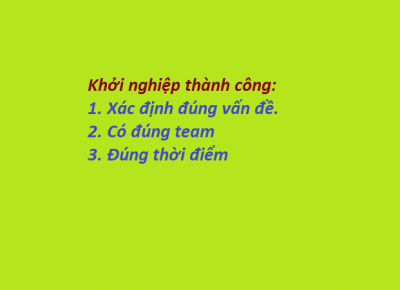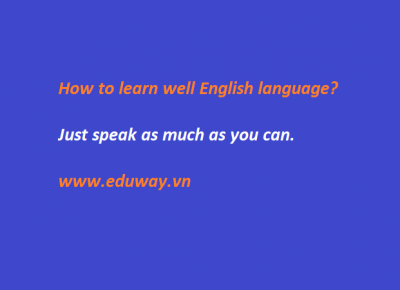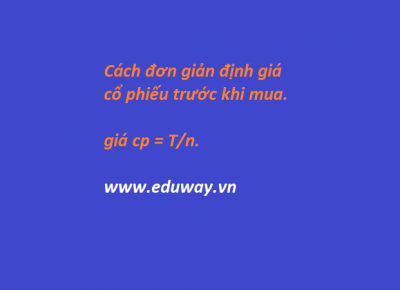Tin tức
Where to learn to be a billionaire
Viết bởi: Paul Klebnikov on Forbes, 28 02 2021
If you want to find a gathering of the world's elite, there's no better place to look than the village of Rolle, Switzerland. Drive along the coast of Lake Geneva, turn south among the picturesque vineyards and farms, and you will come to a discreet driveway nestled among the chestnut trees. It leads to an old chteau surrounded by a cluster of newer buildings.
Here you will find an illustrious gathering. The names speak of the great private fortunes from around the world: Persian Gulf oil money, Greek shipping lords, Italian textile billionaires, Spanish banking families, American tobacco magnates, Japanese industrial tycoons, Hong Kong real estate moguls.
No, this is not a business conference like the World Economic Forum at Davos. The people gathered in this corner of Switzerland are children. And the institution is a boarding school called Institut Le Rosey.
The Guinness Book of World Records doesn't list the world's most expensive boarding schools, but Le Rosey is certainly a contender--it costs a cool $40,000 a year to send your child there. And it is still the most intense concentration of the global elite.
If you think a top-notch American or British boarding school would be too rough on your kid, or if you seek a more international education, Le Rosey is the place. The school contains just 330 boys and girls, aged 7 to 18, from 50 countries. The instruction is either in English, with French on the side, or in French, with English on the side. Among the well-known Swiss boarding schools (Aiglon, Brillamont, Collge du Lman, Zuoz) Le Rosey is considered one of the more serious institutions.
But make no mistake: This is not Eton or Exeter. Here the kids are coddled. They learn manners (all pupils have to stand up when an adult enters the room) but not a lot of Greek and Latin. There are 150 teachers and support staff for the 330 students. The staff cleans up the children's rooms, serves them individually at table, even darns their socks. In 1984, when this reporter took a job teaching tennis at Le Rosey summer school, the kids, according to long-standing student tradition, referred to the cleaning staff as "les esclaves" (the slaves); the local townspeople were termed "les paysans" (the peasants).
Le Rosey has a lavish sports program. Apart from the usual, students can opt for waterskiing, sailing, scuba diving, flying, riding and shooting.
And then there is the skiing. If they bring nothing else back from their time at Le Rosey, the kids certainly learn how to ski. For three months, between January and March, the school moves to the tony resort of Gstaad, where its campus of chalets sits in the center of town. The winter schedule goes something like this: classes in the morning, lunch, skiing in the afternoon, hot chocolate, evening classes and dinner.
Le Rosey downplays "classical" education--like calculus. Instead it promises to foster a number of different attributes, including "physical balance," oral expression and a sense of solidarity (meaning elite consciousness).
"Le Rosey seeks neither an intellectual elite nor a set of 'model' students," the Le Rosey brochure notes. Then it adds, reassuringly: "It does strive, however, to avoid academic failure and/or completely deviant behavior."
With their parents' consent, the kids get to do pretty much what they like. The son of one Saudi sheikh is remembered by his classmates in the 1970s for his unusual extracurricular activities. The boy's bodyguard, a retired cop with the Lausanne vice squad, had been charged with teaching him the facts of life. Every Wednesday afternoon, the bodyguard would pick up the 14-year-old lad and take him to a prostitute--who had been checked out ahead of time, of course.
Le Rosey is known for royalty. The Shah of Iran, the Aga Khan, King Albert II of Belgium, Prince Rainier of Monaco all went there. So did the scions of the royal families of Egypt, Greece, Yugoslavia, Italy and Britain. The school has long had a strong Arab contingent, including a multitude of sheikhs, the children of Saudi Arabian arms dealer Adnan Khashoggi, and his star-crossed nephew Dodi Al-Fayed (killed with Princess Diana in that car crash). Among the 3,000 Le Rosey alumni, you will find the children of movie stars (David Niven, Elizabeth Taylor, Roger Moore), rock stars (John Lennon, Diana Ross) and innumerable European and American fortunes (Rothschild, Botin, Niarchos, Benetton, Duke, du Pont, Rockefeller).
You can see the shifting tides of global wealth in the enrollment register. In the 1950s and 1960s the new wave consisted of Americans, Italians and Greeks. The 1970s brought the Arabs and Iranians. The 1980s saw an influx from Japan, Korea and other Pacific Rim countries. The 1990s brought the Russians.
The gangsters and corrupt officials who have made huge fortunes from Russia's disintegration flocked to place their kids in the right schools. When the Russians arrived at Le Rosey in the mid-1990s they began to reenact their parents' lifestyle, ganging together, fighting, getting drunk and generally terrorizing the other students. At least one non-Russian family withdrew their son from Le Rosey in consequence.
By limiting the number of Russians they accept, the school authorities are trying to get a handle on things. Imposing authority on all the little emperors of Le Rosey can be tough. One Italian boy in the mid-1980s was so obstreperous that his math teacher slapped him. The boy called his father. That very evening the father arrived--in a Ferrari, trailed by several bodyguards. As many students watched, the father apprehended the math teacher in the central courtyard and humiliated him. (The school officials declined to be interviewed about the incident--or anything else.)
The great thing about Le Rosey, of course, is the old boy network it produces--a network that is uniquely tight, uniquely wealthy and uniquely international. "Le Rosey is like a club," notes Hong Kong billionaire Michael Kadoorie, who graduated in 1958. "The contacts made at Le Rosey are contacts one keeps."
John Casablancas, who graduated in 1959, started his modeling business with a Le Rosey classmate. Inspired by his multinational education at Le Rosey, Casablancas did something no other modeling entrepreneur had done before: He went global, establishing 24 agencies worldwide. His Elite Model Management is now the biggest modeling company in the world. Several years ago he was trying to place his TV program, The Elite Model Look, in Venezuela, but no network would take it. Casablancas called his Le Rosey classmate, Alfredo Beracasa, in Venezuela. Beracasa introduced him to the man who ran the local Miss Universe contest, and Casablancas got his airtime.
Waterloo was won on the playing fields of Eton; the global economy, on the slopes of Gstaad.
Here you will find an illustrious gathering. The names speak of the great private fortunes from around the world: Persian Gulf oil money, Greek shipping lords, Italian textile billionaires, Spanish banking families, American tobacco magnates, Japanese industrial tycoons, Hong Kong real estate moguls.
No, this is not a business conference like the World Economic Forum at Davos. The people gathered in this corner of Switzerland are children. And the institution is a boarding school called Institut Le Rosey.
The Guinness Book of World Records doesn't list the world's most expensive boarding schools, but Le Rosey is certainly a contender--it costs a cool $40,000 a year to send your child there. And it is still the most intense concentration of the global elite.
If you think a top-notch American or British boarding school would be too rough on your kid, or if you seek a more international education, Le Rosey is the place. The school contains just 330 boys and girls, aged 7 to 18, from 50 countries. The instruction is either in English, with French on the side, or in French, with English on the side. Among the well-known Swiss boarding schools (Aiglon, Brillamont, Collge du Lman, Zuoz) Le Rosey is considered one of the more serious institutions.
But make no mistake: This is not Eton or Exeter. Here the kids are coddled. They learn manners (all pupils have to stand up when an adult enters the room) but not a lot of Greek and Latin. There are 150 teachers and support staff for the 330 students. The staff cleans up the children's rooms, serves them individually at table, even darns their socks. In 1984, when this reporter took a job teaching tennis at Le Rosey summer school, the kids, according to long-standing student tradition, referred to the cleaning staff as "les esclaves" (the slaves); the local townspeople were termed "les paysans" (the peasants).
Le Rosey has a lavish sports program. Apart from the usual, students can opt for waterskiing, sailing, scuba diving, flying, riding and shooting.
And then there is the skiing. If they bring nothing else back from their time at Le Rosey, the kids certainly learn how to ski. For three months, between January and March, the school moves to the tony resort of Gstaad, where its campus of chalets sits in the center of town. The winter schedule goes something like this: classes in the morning, lunch, skiing in the afternoon, hot chocolate, evening classes and dinner.
Le Rosey downplays "classical" education--like calculus. Instead it promises to foster a number of different attributes, including "physical balance," oral expression and a sense of solidarity (meaning elite consciousness).
"Le Rosey seeks neither an intellectual elite nor a set of 'model' students," the Le Rosey brochure notes. Then it adds, reassuringly: "It does strive, however, to avoid academic failure and/or completely deviant behavior."
With their parents' consent, the kids get to do pretty much what they like. The son of one Saudi sheikh is remembered by his classmates in the 1970s for his unusual extracurricular activities. The boy's bodyguard, a retired cop with the Lausanne vice squad, had been charged with teaching him the facts of life. Every Wednesday afternoon, the bodyguard would pick up the 14-year-old lad and take him to a prostitute--who had been checked out ahead of time, of course.
Le Rosey is known for royalty. The Shah of Iran, the Aga Khan, King Albert II of Belgium, Prince Rainier of Monaco all went there. So did the scions of the royal families of Egypt, Greece, Yugoslavia, Italy and Britain. The school has long had a strong Arab contingent, including a multitude of sheikhs, the children of Saudi Arabian arms dealer Adnan Khashoggi, and his star-crossed nephew Dodi Al-Fayed (killed with Princess Diana in that car crash). Among the 3,000 Le Rosey alumni, you will find the children of movie stars (David Niven, Elizabeth Taylor, Roger Moore), rock stars (John Lennon, Diana Ross) and innumerable European and American fortunes (Rothschild, Botin, Niarchos, Benetton, Duke, du Pont, Rockefeller).
You can see the shifting tides of global wealth in the enrollment register. In the 1950s and 1960s the new wave consisted of Americans, Italians and Greeks. The 1970s brought the Arabs and Iranians. The 1980s saw an influx from Japan, Korea and other Pacific Rim countries. The 1990s brought the Russians.
The gangsters and corrupt officials who have made huge fortunes from Russia's disintegration flocked to place their kids in the right schools. When the Russians arrived at Le Rosey in the mid-1990s they began to reenact their parents' lifestyle, ganging together, fighting, getting drunk and generally terrorizing the other students. At least one non-Russian family withdrew their son from Le Rosey in consequence.
By limiting the number of Russians they accept, the school authorities are trying to get a handle on things. Imposing authority on all the little emperors of Le Rosey can be tough. One Italian boy in the mid-1980s was so obstreperous that his math teacher slapped him. The boy called his father. That very evening the father arrived--in a Ferrari, trailed by several bodyguards. As many students watched, the father apprehended the math teacher in the central courtyard and humiliated him. (The school officials declined to be interviewed about the incident--or anything else.)
The great thing about Le Rosey, of course, is the old boy network it produces--a network that is uniquely tight, uniquely wealthy and uniquely international. "Le Rosey is like a club," notes Hong Kong billionaire Michael Kadoorie, who graduated in 1958. "The contacts made at Le Rosey are contacts one keeps."
John Casablancas, who graduated in 1959, started his modeling business with a Le Rosey classmate. Inspired by his multinational education at Le Rosey, Casablancas did something no other modeling entrepreneur had done before: He went global, establishing 24 agencies worldwide. His Elite Model Management is now the biggest modeling company in the world. Several years ago he was trying to place his TV program, The Elite Model Look, in Venezuela, but no network would take it. Casablancas called his Le Rosey classmate, Alfredo Beracasa, in Venezuela. Beracasa introduced him to the man who ran the local Miss Universe contest, and Casablancas got his airtime.
Waterloo was won on the playing fields of Eton; the global economy, on the slopes of Gstaad.
Có thể bạn quan tâm
11 06 2023 Xem thêm
Feynman wrote a letter to his former student explaining what problems worth solving: The worthwhile...
27 05 2023 Xem thêm
Doanh nghiệp cần các kỹ sư và nhà nghiên cứu giải quyết vấn đề của doanh nghiệp đó như tối ưu vận...
16 03 2023 Xem thêm
Cần phải xác định đúng vấn đề và tìm một team phù hợp.
04 01 2023 Xem thêm
Lấy tổng tài sản (đã trừ nợ, trừ thuế) chia cho tổng số cổ phiếu.









